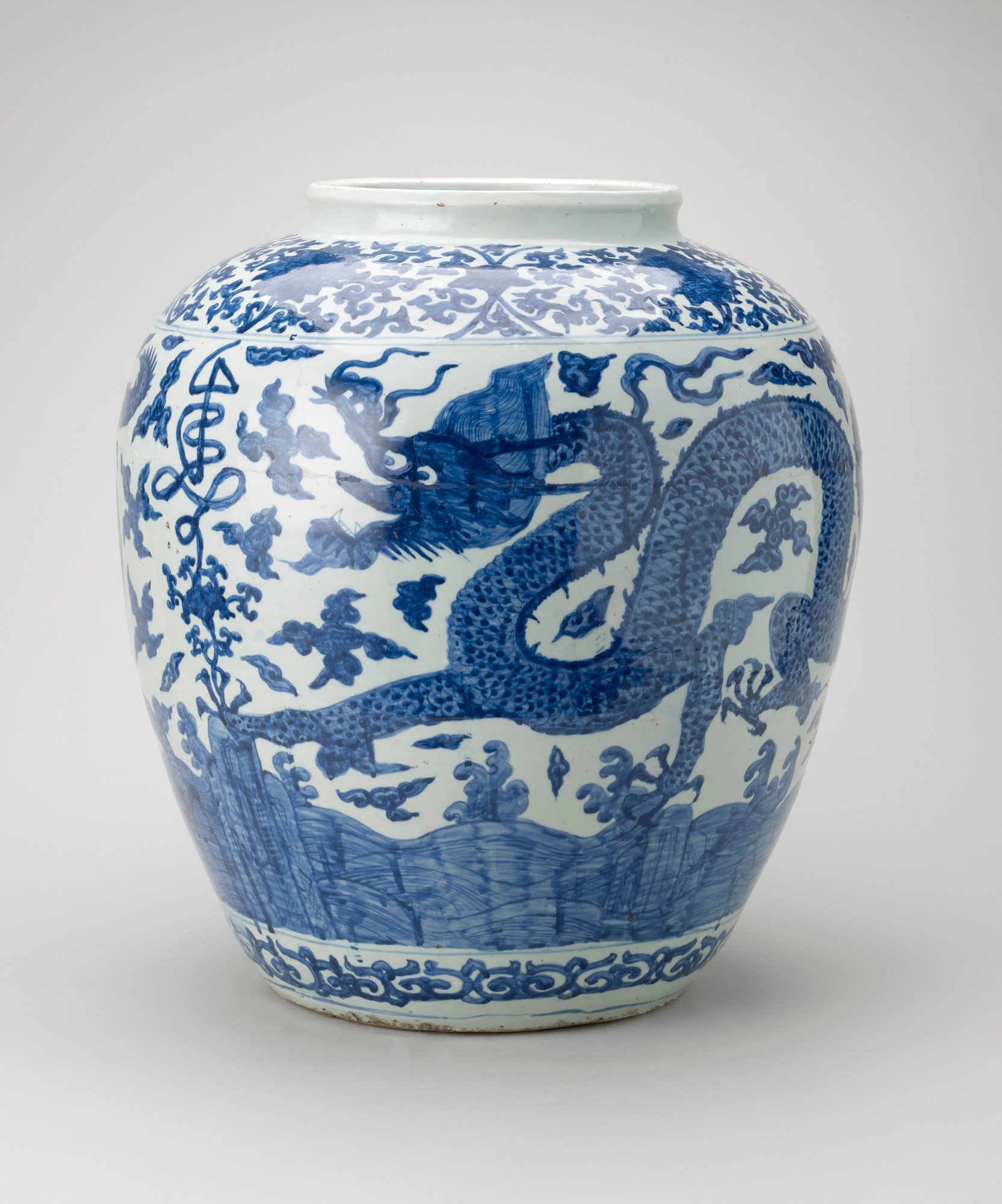
East Meets West
Extraordinary Chinese and Japanese Works of Art in the Royal Collection
Pair of vases
reign of Kangxi, c.1690-1710RCIN 570
From the 1750s a new European fashion for antique ornament emerged, inspired by recent excavations of the Roman cities of Pompeii and Herculaneum. Chinese wares with fanciful underglaze designs did not fit well with this new, more severe style, so European merchants began to request monochrome (single-colour) pieces in their place. These wares were usually made in official kilns and reserved for use at the Imperial Court, but a relatively small number did become available via Chinese supercargoes – Canton-based traders who were able to obtain these rare porcelains for sale to Europe.
These bottle vases have a monochrome grey-green glaze. In Paris, such pieces were highly sought-after by dealers who often had them mounted in gilt bronze when they arrived in Europe. George IV (1762–1830) displayed many fine wares of this type at the Royal Pavilion, Brighton.







